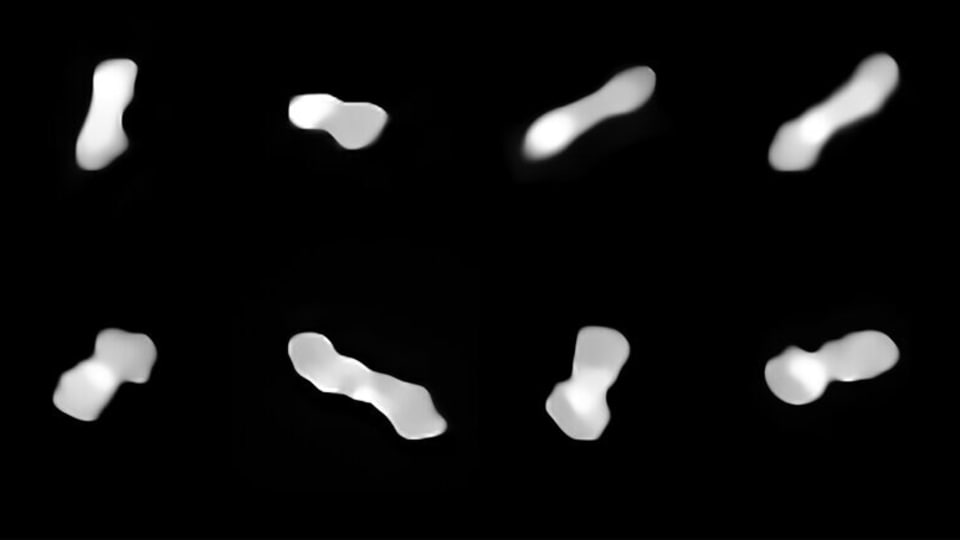You won't believe what this UNIQUE asteroid, dubbed Kleopatra, has around it
An asteroid is as fascinating as it is scary. They have immense potential for destruction and virtually no one has any idea when a new one will pop up around the Earth and shock everyone concerned. This specific one is an eye-ball grabber too and it is called asteroid Kleopatra - it even gave birth!


An asteroid is a small, rocky object orbiting the Sun. In our Solar System, asteroids are mostly found between Mars and Jupiter. A fascinating find has been of this one asteroid in the asteroid belt between both these planets and no, it does not pose a threat to Earth. The asteroid is called Kleopatra, which is named after the famous Egyptian queen. A very apt name as Kleopatra too was a fascinating person in history. Like the queen, asteroid Kleopatra too will go down in history as something to remember due to its characteristics. “Kleopatra is truly a unique body in our Solar System,” says Franck Marchis, an astronomer at the SETI Institute in Mountain View, USA and at the Laboratoire d'Astrophysique de Marseille, France, who led a study on the asteroid — which has moons and an unusual shape — published today in Astronomy & Astrophysics.
What makes asteroid Kleopatra special, is that it has as many as two moons! They have been named AlexHelios and CleoSelene, which were the names of the Egyptian queen's children. A lot of planets have moons, but an asteroid is rare. Up until now, researchers believed Kleopatra's moons were formed billions of years ago like the asteroid itself when the Solar System was taking shape. But now, astronomers have obtained detailed images of Kleopatra and its two moons that indicate otherwise.
Research provides further clues as to how this asteroid and the two moons that orbit it actually formed. To find out more about asteroid Kleopatra, Marchis and his team used snapshots of the asteroid taken at different times between 2017 and 2019 with the Spectro-Polarimetric High-contrast Exoplanet Research instrument on ESO's VLT. As the asteroid was rotating, they were able to view it from different angles and to create the most accurate 3D models of its shape to date. Using these observations, the astronomers determined the length of asteroid Kleopatra to be about 270Km.
What it also showed was that asteroid Kleopatra does not have the legendary beauty of Queen Kleopatra that had ensnared the Emperor of Rome, Julius Caesar. In fact, asteroid Kleopatra is quite ugly. It is shaped just like a dog bone!
In a second study, which was also published in Astronomy & Astrophysics and led by Miroslav Broz of Charles University in Prague, Czech Republic, the team reported how they used the SPHERE observations to find the correct orbits of Kleopatra's two moons. With this new equipment, astronomers were able to calculate Kleopatra's mass to be nearly 35% lower than previous estimates.
The low density of Kleopatra, which is believed to have a metallic composition, suggests that it has a porous structure and could be little more than a “pile of rubble”. It also gives indications as to how its two moons could have formed.
The asteroid rotates almost at a critical speed, the speed above which it would start to fall apart, and even small impacts may lift pebbles off its surface.
That points to another fascinating fact, Marchis and his team believe that those pebbles could have formed AlexHelios and CleoSelene, meaning that Kleopatra has truly birthed its own moons!
A team of European Space Agency (ESO) astronomers at the European Southern Observatory's Very Large Telescope ESO's (VLT) have obtained the sharpest and most detailed images yet of the asteroid Kleopatra. The observations have allowed the team to constrain the 3D shape and mass of this peculiar asteroid.
Catch all the Latest Tech News, Mobile News, Laptop News, Gaming news, Wearables News , How To News, also keep up with us on Whatsapp channel,Twitter, Facebook, Google News, and Instagram. For our latest videos, subscribe to our YouTube channel.




















